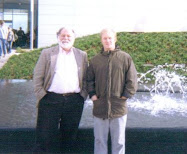Texas State Library and Archives Commission provides several documented lessons on Texas history via their online exhibits. Other depositories would serve Texas well by similar works that integrated their holdings into learning opportunities. Self-described from http://www.tsl.state.tx.us/exhibits/index.html
| This exhibition highlights the greatest treasures of the Texas State Library and Archives, from Travis' Letter from the Alamo to the original Ordinance of Secession, from historic flags to wanted posters for Sam Bass and Clyde Barrow. New treasures and topics will be added on a periodic basis. |  |
| Biographies of all of the governors of Texas, complete with official portraits, timeline of events, revealing documents, and rare photos. |  |
| Henry McArdle's battle paintings, Dawn at the Alamo and The Battle of San Jacinto, have become Texas icons. The painstaking detail of the paintings was reflected in exhaustive research. McArdle's notebooks are packed with letters, notes, and photographs documenting the paintings and the events they depict. |  |
| Fifty-two African-American men served Texas as either state legislative members or Constitutional Convention delegates during the last half of the 19th century, representing the first significant political achievement by the African-American citizens of this state. |  |
| Diaries and letters of Texas women, political cartoons, government documents, and photographs and postcards tell the little-known story of the women activists who fought to overcome societal attitudes and entrenched power and won the rights of full citizenship. |  |
| In the years from 1877 to 1900, the �Gilded Age� in American history, F. E. �Ernst� and Oscar Ruffini were part of the first wave of professional architects to practice in Texas. A large collection of their drawings, specifications, and correspondence can be viewed on site at the Texas State Library and Archives. Representative examples of their work are included in this exhibit. |  |
| Government documents, photographs, political cartoons, and other artifacts help tell the story of the agency founded in 1891 on a tide of populist resentment of the railroads that went on in the 20th century to wield legendary power over the supply and price of oil and natural gas. |  |
| For more than three centuries, relations between whites and Indians occupied a central place in Texas life. The Texas State Library and Archives is home to a massive collection called the Texas Indian Papers. These and other documents and photographs from our collections tell the story of an epic clash of cultures. |  |
| The sailors of Texas were vital to the survival of the Republic; they defended the coastline, ensured Texas supply lines, and brought in much-needed revenue from prizes and captures. In this exhibit, adventure in the Gulf is paired with a political blood feud which brought the Navy crashing down amidst charges of piracy, mutiny, and murder.
|  |
| For the next ten years, four very different men led the Republic of Texas down a difficult and unknown path as an independent nation. Although these men were different--sawmill operator, soldier, poet, doctor--they were also much alike. To a man they had known crushing failure. Each had the heart and nerve to take the helm of a penniless, lawless land and dream of the mighty Texas it might one day become. Each of them, for good and for ill, shaped that destiny. This is their story. |  |
| At the time of the Texas Revolution, most Texans and Americans assumed that the Republic of Texas would be swiftly annexed to the United States. Instead, the process of annexation took nine long and bruising years. In hindsight, Texas annexation seems inevitable. But it all could have been so different. |  |
| Created in 1923, the State Parks Board struggled until the New Deal poured millions of federal dollars into creating state parks for Texas. In the decades to follow, Texans who loved the outdoors promoted state parks as a public good that provides fun and serenity to the public while preserving the natural beauty of Texas. But always the parks have competed with other state needs and priorities. |  | | Though Texans had fought for many years to achieve annexation to the United States, they voted decisively to secede from the Union and join the Confederacy in 1861. From the embattled cotton port of Galveston to the besieged Indian frontier, from the Louisiana border to the Rio Grande, Texans would spend the next four bitter, desperate years learning the reality of war. |  | http://www.tsl.state.tx.us/exhibits/annexation/index.html |




















No comments:
Post a Comment